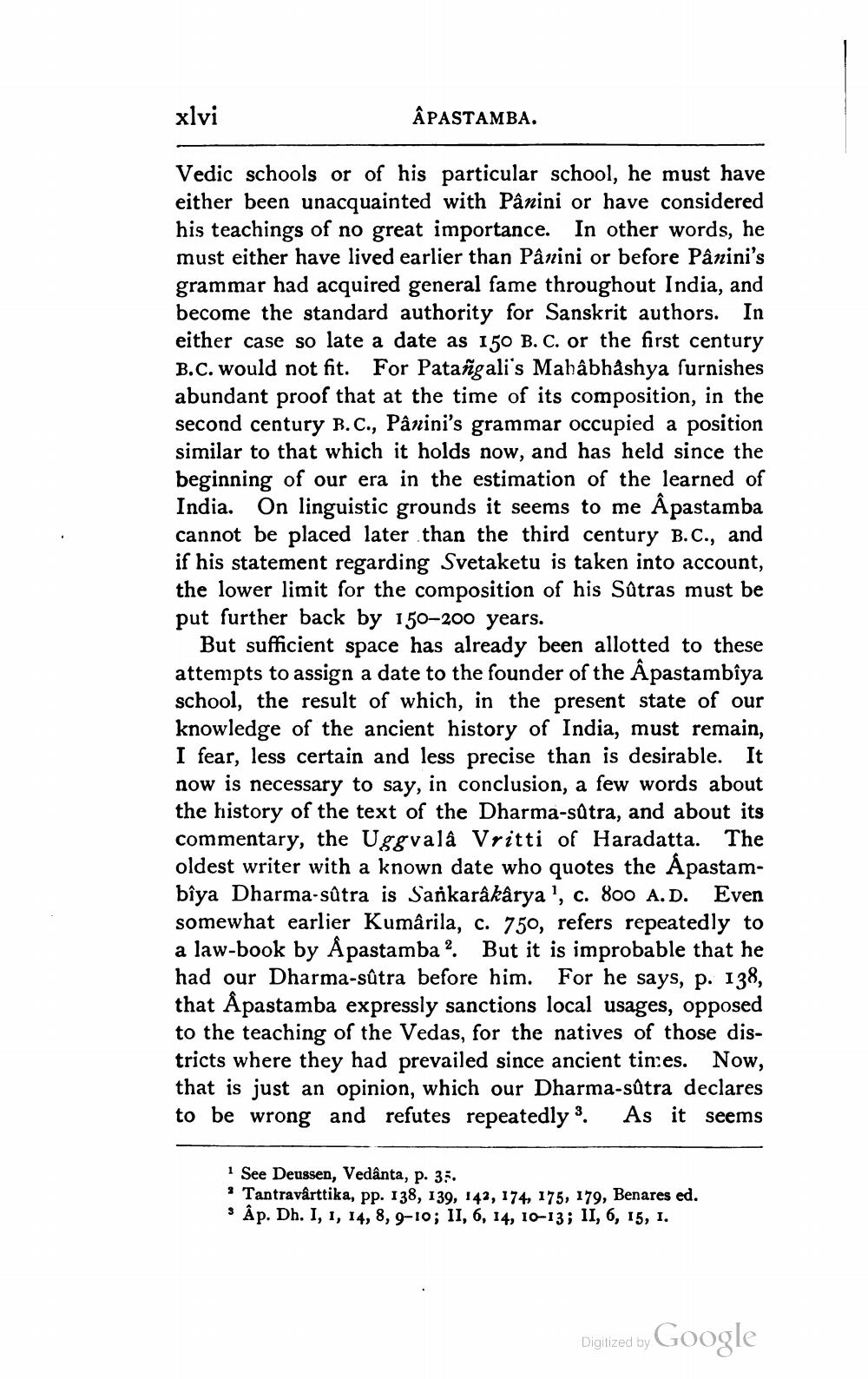________________
ÂPASTAMBA.
xlvi
Vedic schools or of his particular school, he must have either been unacquainted with Pânini or have considered his teachings of no great importance. In other words, he must either have lived earlier than Pânini or before Pânini's grammar had acquired general fame throughout India, and become the standard authority for Sanskrit authors. In either case so late a date as 150 B. C. or the first century B.C. would not fit. For Patangali's Mahâbhâshya furnishes abundant proof that at the time of its composition, in the second century B. C., Pânini's grammar occupied a position similar to that which it holds now, and has held since the beginning of our era in the estimation of the learned of India. On linguistic grounds it seems to me Âpastamba cannot be placed later than the third century B. C., and if his statement regarding Svetaketu is taken into account, the lower limit for the composition of his Sûtras must be put further back by 150-200 years.
But sufficient space has already been allotted to these attempts to assign a date to the founder of the Âpastambîya school, the result of which, in the present state of our knowledge of the ancient history of India, must remain, I fear, less certain and less precise than is desirable. It now is necessary to say, in conclusion, a few words about the history of the text of the Dharma-sûtra, and about its commentary, the Uggvalâ Vritti of Haradatta. The oldest writer with a known date who quotes the Apastambîya Dharma-sûtra is Sankarâkârya', c. 800 A.D. Even somewhat earlier Kumârila, c. 750, refers repeatedly to a law-book by Âpastamba. But it is improbable that he had our Dharma-sûtra before him. For he says, p. 138, that Âpastamba expressly sanctions local usages, opposed to the teaching of the Vedas, for the natives of those districts where they had prevailed since ancient times. Now, that is just an opinion, which our Dharma-sûtra declares to be wrong and refutes repeatedly 3. As it seems
1 See Deussen, Vedanta, p. 35.
* Tantravârttika, pp. 138, 139, 142, 174, 175, 179, Benares ed.
3
Ap. Dh. I, 1, 14, 8, 9-10; II, 6, 14, 10-13; II, 6, 15, I.
Digitized by
Google




